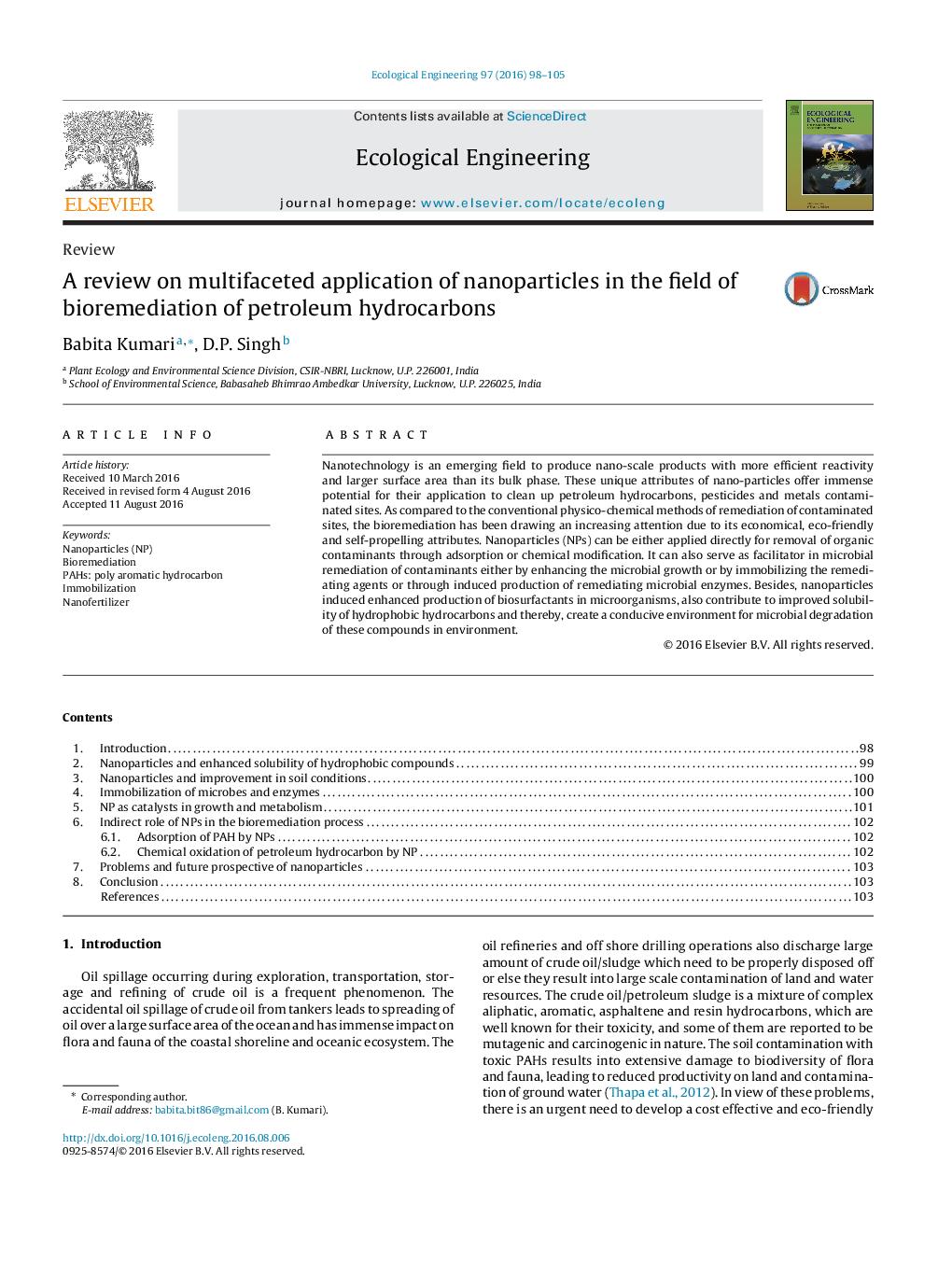| کد مقاله | کد نشریه | سال انتشار | مقاله انگلیسی | نسخه تمام متن |
|---|---|---|---|---|
| 4388370 | 1618002 | 2016 | 8 صفحه PDF | دانلود رایگان |
کلمات کلیدی
1.مقدمه
2. نانوذرات و افزایش حلالیت ترکیبات آب گریز
3. نانو ذرات و بهبود شرایط خاک
جدول 1. مزیت های استفاده ازکودهای مرسوم با فرمول تنظیم مبتنی بر فناوری نانوذرات (Cui et al., 2010).
4. تثبیت کردن میکروب ها و آنزیم ها
شکل 1. آرایش Rhodococcus erythropolis IGST8 با نانوذرات مغناطیسی Fe3O4
5. استفاده از نانوذرات به عنوان کاتالیزور در رشد و سوخت وساز
جدول 2. آنزیم های درگیر در تخریب هیدروکربن های نفتی
شکل 2. سنتز دو مرحله ای لیپاز با پوشش پلیودوپامین بر روی نانو ذرات مغناطیسی (PDN-MNP)
6. نقش غیر مستقیم نانوذرات در فرایند زیست پالایی
6.1. جذب آروماتیک های چند حلقه ای ((PAH توسط نانوذرات
6.2. اکسیداسیون شیمیایی هیدروکربن های نفت توسط نانوذرات
7. مشکلات و چشم انداز ذرات نانو
8. نتیجه گیری
Nanotechnology is an emerging field to produce nano-scale products with more efficient reactivity and larger surface area than its bulk phase. These unique attributes of nano-particles offer immense potential for their application to clean up petroleum hydrocarbons, pesticides and metals contaminated sites. As compared to the conventional physico-chemical methods of remediation of contaminated sites, the bioremediation has been drawing an increasing attention due to its economical, eco-friendly and self-propelling attributes. Nanoparticles (NPs) can be either applied directly for removal of organic contaminants through adsorption or chemical modification. It can also serve as facilitator in microbial remediation of contaminants either by enhancing the microbial growth or by immobilizing the remediating agents or through induced production of remediating microbial enzymes. Besides, nanoparticles induced enhanced production of biosurfactants in microorganisms, also contribute to improved solubility of hydrophobic hydrocarbons and thereby, create a conducive environment for microbial degradation of these compounds in environment.
Figure optionsDownload as PowerPoint slide
Journal: Ecological Engineering - Volume 97, December 2016, Pages 98–105
